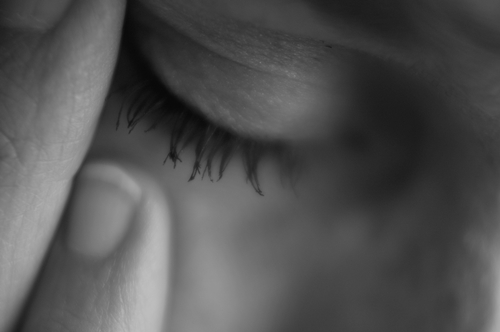4 August 2017. Results of a clinical trial show a single dose of new drug relieved migraine pain among more people with the condition, compared to a placebo. Eli Lilly and Company in Indianapolis, the company making the drug, announced today the first results from the study.
The late-stage trial tested Lilly’s drug for migraine known as lasmiditan. Migraine is a neurological syndrome causing severe headaches along with nausea, vomiting, and extreme sensitivity to light and sound. In some cases, migraines are preceded by warning episodes called aura including flashes of light, blind spots, or tingling in arms and legs. The web site Migraine.com estimates 37 million people in the U.S. suffer from migraines, and cites World Health Organization data indicating migraines affect 18 percent of American women and 7 percent of men.
Lasmiditan works by stimulating receptors for the protein 5-HT1F in the trigeminal nerve pathway system in the brain, where activating these receptors blocks migraine pain signals through the pathway. The drug does not constrict blood vessels, unlike some other migraine therapies, making it potentially more suitable for individuals with cardiovascular conditions.
The clinical trial recruited some 3,000 individuals at 95 sites to test the efficacy and safety of lasmiditan at dosages of 50, 100, and 200 milligrams. Participants in the trial — individuals with a history of migraine, including one or more disabling migraines in the previous year — were randomly assigned to take lasmiditan in one of the 3 dosages or a placebo, when experiencing a migraine attack. Trial participants could also take a second dose of the drug for rescue or recurrence if needed in the next 24 hours.
The study team looked primarily at the number of participants indicating they were pain free after 2 hours. Researchers also tracked the percentage of individuals reporting being free of their most bothersome secondary migraine symptom, such as nausea or noise sensitivity, after 2 hours. In addition, the team tracked several other indicators including use of rescue medications, recurrence of headaches, and adverse effects.
The results show larger percentages of participants reported being pain free within 2 hours after a single dose of Lasmiditan for all 3 doses, from 29 percent for 50 milligrams to 39 percent for 200 milligrams, compared to the placebo at 21 percent, with the differences at all 3 levels large enough to be statistically reliable. In addition, between 41 and 49 percent of participants taking lasmiditan reported being free of their most bothersome secondary migraine symptom within 2 hours, compared to 34 percent for the placebo. Again, all differences compared to the placebo were large enough for statistical reliability.
Lilly reports participants taking lasmiditan also indicated experiencing less migraine pain and disability overall. The most common adverse side effects among participants taking the drug were skin tingling or numbness, dizziness, sleepiness, fatigue, nausea, and lethargy.
The trial is the second late-stage study of lasmiditan, with a long-term safety trial underway. That long-term study is now inviting participants from the individuals who enrolled in the two late-stage trials. Lilly expects to submit the drug to FDA for review in the second half of 2018.
The company acquired lasmiditan with its buy-out of biopharmaceutical developer CoLucid Pharma in January 2017. As reported in Science & Enterprise, Lilly first discovered lasmiditan, then in 2005 licensed it to CoLucid for development, but reacquired the drug with CoLucid in a deal valued at $960 million.
More from Science & Enterprise:
- Device Shown to Reduce Migraine Occurrence
- Mobile App-Controlled Patch Reduces Migraine Pain
- Trial Shows Antibody Reduces Days with Migraines
- Preventive Drugs Offer No Benefit for Children’s Migraine
- Antibody Treatment Shown to Prevent Migraine
* * *


 RSS - Posts
RSS - Posts
You must be logged in to post a comment.